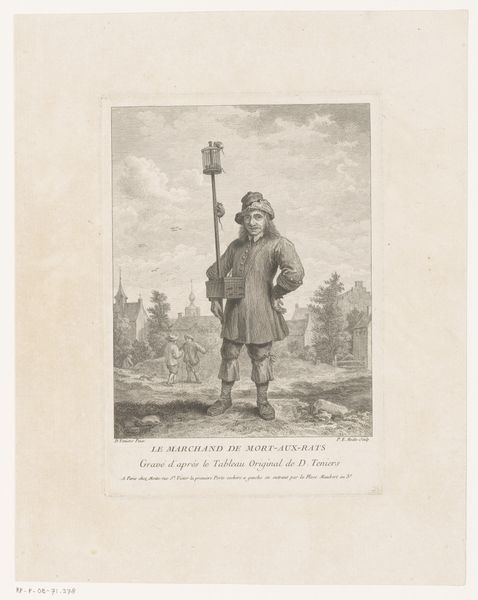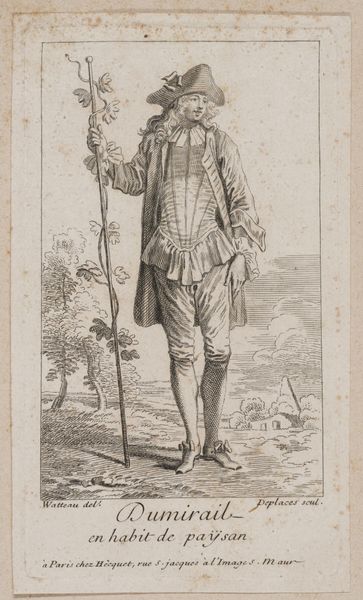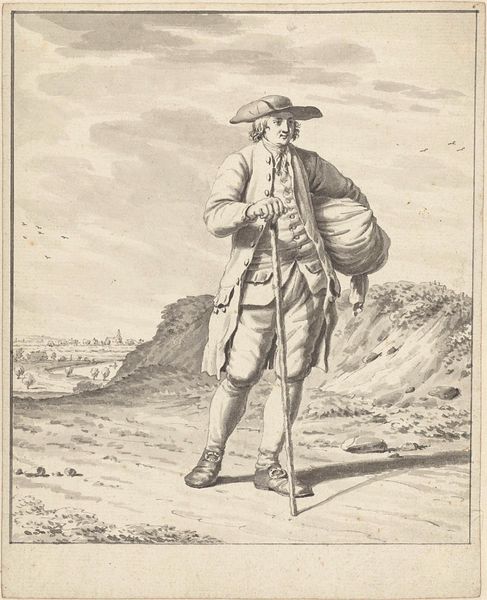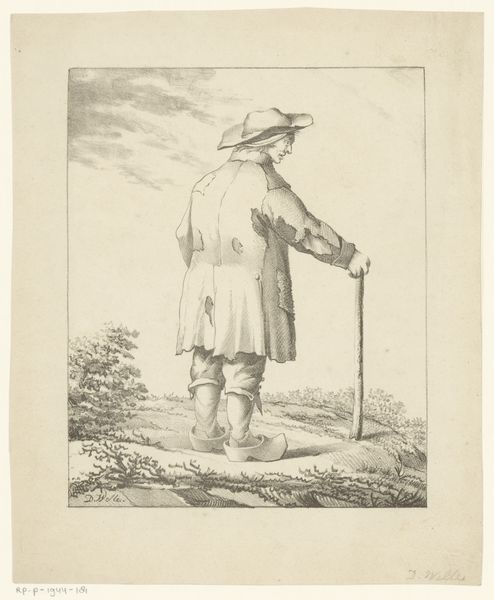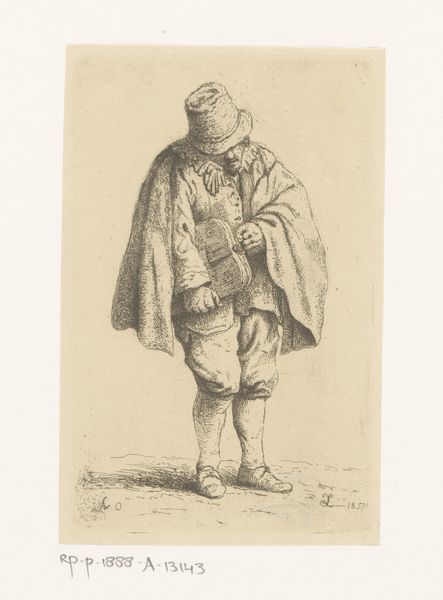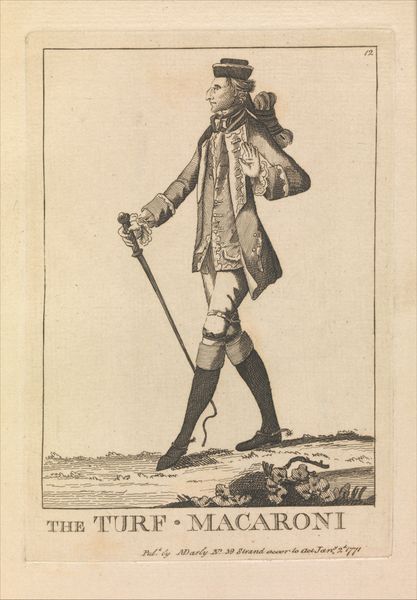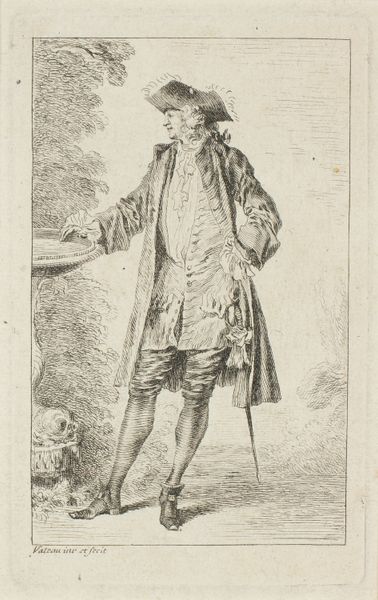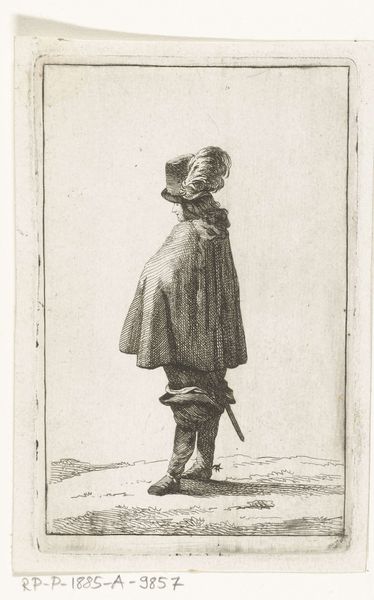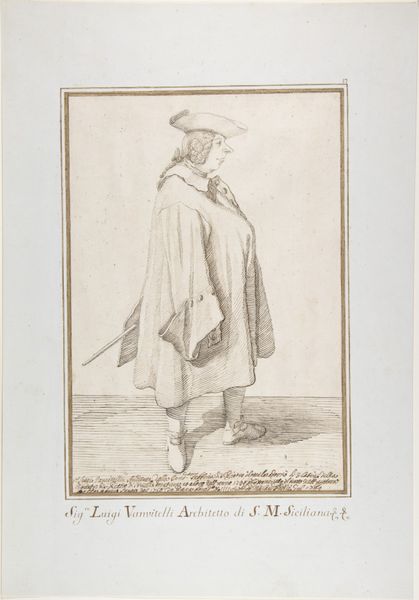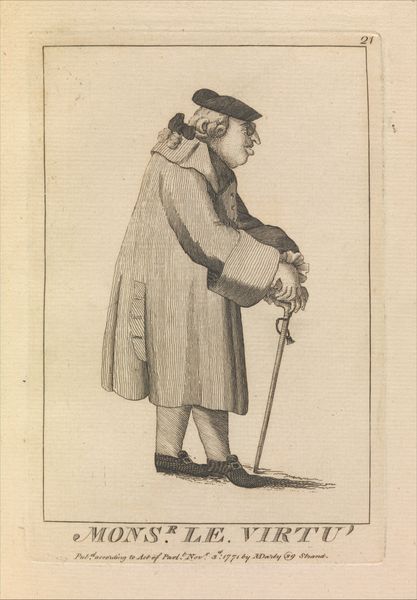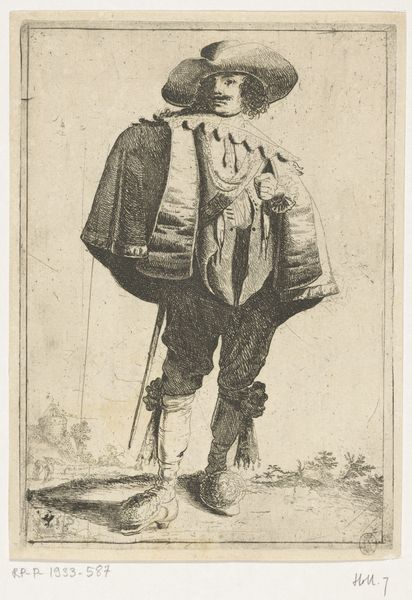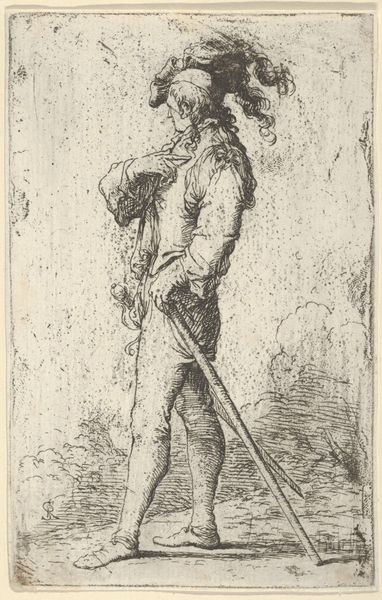
print, engraving
#
portrait
#
neoclacissism
# print
#
old engraving style
#
history-painting
#
engraving
Copyright: National Gallery of Art: CC0 1.0
Editor: Here we have Jean Huber's "Voltaire" from 1778, an engraving. I’m immediately struck by the contrast. Voltaire appears so frail, almost lost against the dramatic landscape and swirling sky. How do you interpret the formal elements at play here? Curator: The linearity, undoubtedly. Observe how the incisive lines, typical of engraving, delineate form with a remarkable precision, bordering on caricature. This emphasizes, shall we say, a certain gauntness. Consider the positioning: how does his figure interact with the negative space around him, and how does that placement influence your perception? Editor: It does highlight the space between him and the distant mountains. The starkness almost seems to isolate him, emphasizing a kind of lonely eminence. The controlled hatching suggests so much texture despite the print’s limited color range. Curator: Precisely. The lack of color serves to underscore the emphasis on form and line. Note how the textures within the clothing compete with that of the landscape for visual interest. Is there any tension for you created by this choice? Editor: I do feel pulled in two directions, his elaborate coat draws my attention, then my eye is drawn to the wide open space that seems to swallow the subject matter. That juxtaposition does seem purposeful, maybe it is saying something about man vs nature? Curator: Perhaps. It may be equally fruitful to simply explore the compositional strategies the artist employed. Editor: This has definitely encouraged me to consider composition as more than just background! I see now how it drives the emotional impact. Curator: Indeed. Visual literacy deepens our engagement with art's fundamental language.
Comments
No comments
Be the first to comment and join the conversation on the ultimate creative platform.
